Godzilla and His Son Funny Photos
Godzilla is the James Bond of giant lizards. It's been seven decades since he first lurched out of the ocean, bearing tidings of bodacious atomic destruction like your drunkest friend showing up to the Super Bowl party with a crockpot full of "queso dip" made primarily from tap water and 17 packets of macaroni cheese dust. In the decades since, the King of the Monsters has appeared in no less than 36 official films, roughly a dozen more than the British superspy.
With Godzilla vs. Kong hitting theaters and HBO Max this week, we thought it would be helpful to provide a handy viewing guide for you to get caught up on the King of the Monsters' nearly 70-year history. There's been a handful of reboots, roughly a dozen different named monsters, and some repeated themes that have popped up over the decades, which can make the franchise feel more confusing than it actually is. As it turns out, there's very little overall continuity, with almost every new installment acting as a standalone feature. But it does frequently ask you to have at least a passing familiarity with several characters and events, even if the level of familiarity required usually goes no further than being able to point at the screen and say, "That's Godzilla." So, we've broken down how to watch every Godzilla movie chronologically in order of events, as well as in the order in which they were released, so you can experience the franchise in whichever way you prefer.
Godzilla Movies in Chronological Order of Events

As we mentioned, the continuity of the Godzilla franchise isn't terribly strict. As long as you start with the first film, you can jump around pretty freely without feeling confused (well, without feeling more confused, as kaiju movies are notoriously dense with their own self-contained lore). That said, Godzilla fans tend to group the movies into several distinct eras, each with a unique tone and take on the big smashy lizard.
Shōwa era
The "classic" period of Godzilla movies, the Shōwa era contains most of the films people think of when they picture our favorite atomic lizard. Weirdly, even though this period begins with the decidedly bleak and somber 1954 original, it's best known for the franchise's goofier moments, including Godzilla's ludicrous son Minilla and pretty much every pro-wrestling-style GIF you've ever seen of the mighty kaiju.
Godzilla (1954)
Standing in sharp contrast to the joyful camp the franchise would come to embody, the original Godzilla is a deadly serious allegory about the horrors of the atomic age, produced by the only country in history to have ever experienced a nuclear attack. The movie marks the first appearance of our favorite giant monster, and establishes his origin as an ancient creature awoken and mutated by underwater hydrogen bomb testing. There's still plenty of cheese to be found – no amount of gruesome imagery and historical subtext can disguise the fact that the film's central antagonist is a man in a rubber dinosaur suit – but Godzilla is a shockingly effective film made all the more haunting by the fact that it was released just ten years after the nuclear annihilation of Hiroshima and Nagasaki.
Godzilla Raids Again (1955)
Godzilla Raids Again is technically a direct sequel to Godzilla in that it features some returning characters and references the events of the original film. But the movie quickly explains that this Godzilla is a brand-new member of the same species, rather than the same radioactive lizard we saw the year before. This movie also marks the first time Godzilla does battle with another kaiju – Anguirus, a bizarre turtle/ankylosaurus type creature who would appear in several more films in the series.
King Kong vs. Godzilla (1962)
Our beautiful big bois squared off for the first time fairly early in Godzilla's career. King Kong vs. Godzilla reimagines the tragic ape as a much larger ape of considerably less tragedy. This film shares some light continuity with Godzilla Raids Again in that Godzilla begins the adventure frozen in an iceberg, where he has presumably been since the Japanese Army buried him in an icy avalanche at the end of the previous movie.
Mothra vs. Godzilla (1964)
The benevolent giant insect Mothra joins the Godzillaverse in this feature, once again placing Godzilla in the role of antagonist as the two duke it out over the safety of Mothra's hatchlings. Mothra vs. Godzilla doesn't seem to share any continuity with the previous installments, although you could argue that the big lizard washed ashore after the events of King Kong vs. Godzilla and continued his rampage as soon as he woke up.
Ghidorah, the Three-Headed Monster (1964)
The franchise's most iconic villain makes his debut in this film, as King Ghidorah crashes down from space to do battle with Godzilla, Mothra, and Rodan. Ghidorah, the Three-Headed Monster doesn't appear to share any overall continuity with the previous films apart from a basic understanding of who the main monster characters are, which is more or less the baseline for the franchise in terms of an ongoing narrative. (These movies are practically designed to be watched out-of-order on cable.) This is also the first time in history Godzilla is portrayed as a heroic figure, which will be his role for the majority of the franchise going forward.
Invasion of Astro-Monster (1965)
Invasion of Astro-Monster is a direct sequel to King Ghidorah, the Three-Headed Monster, taking place a year after the events of that film. King Ghidorah has continued harassing other planets in the solar system after getting kicked off of Earth by Godzilla and friends, and the alien inhabitants of Planet X reach out to the earthlings for help. However, it turns out to be a clever ruse, allowing the Xiliens to use a mind control device on Godzilla, Mothra, and Rodan in an effort to conquer the globe.
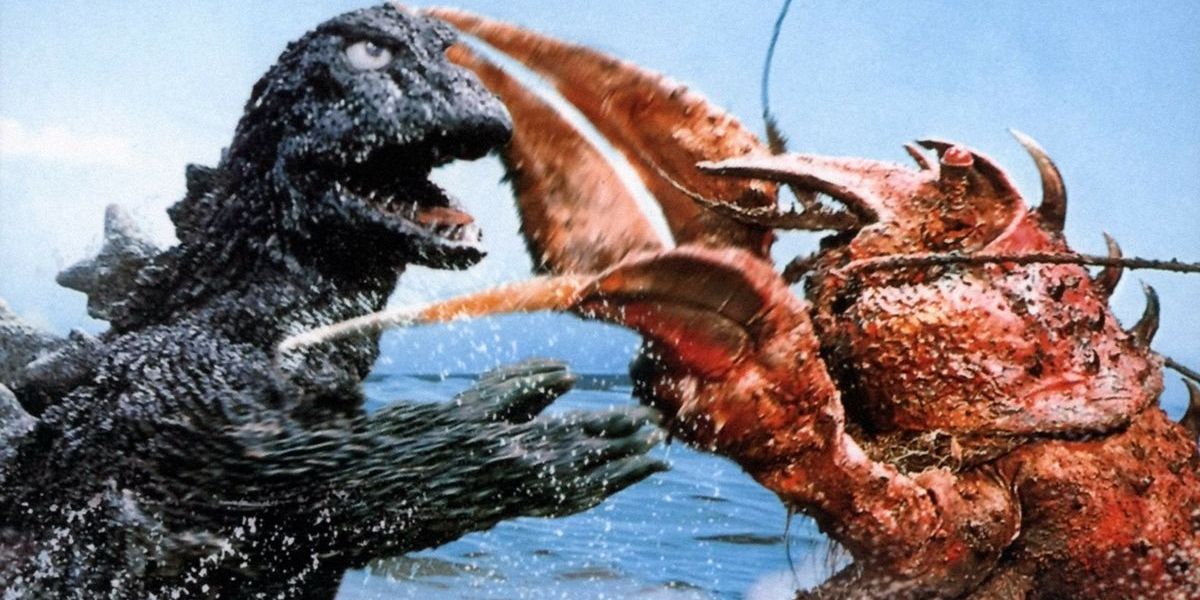
Ebirah, Horror of the Deep (1966)
Godzilla fights a gigantic lobster named Ebirah in this installment, which carries some minor continuity over from the previous film in that our lizard champion's recent battle with King Ghidorah is mentioned. Some ado is also made of his leftover beef with Mothra from Mothra vs. Godzilla, which leads to the two creatures butting heads once again in the film's finale.
Son of Godzilla (1967)
It is an unwritten rule of cinema that every fearsome creature has to have an adorable child show up in a sequel. (See also Son of Kong , Wall Street: Money Never Sleeps , etc.) Son of Godzilla introduces Minilla, Godzilla's sort-of offspring whom he rescues from the clutches of an island of killer insects. Godzilla uses bullying to teach Minilla how to fight, and the two defeat a series of praying mantises and a giant spider to create what is now the only version of "Cat's in the Cradle" I care to hear. Son of Godzilla doesn't seem to connect to the other movies beyond asking you to be able to pick Godzilla out of a lineup.
Destroy All Monsters (1968)
Destroy All Monsters is kind of like The Avengers of the Godzilla franchise. This film brings together every monster from the previous films, including a few from some other Toho properties, for a massive battle royale against the eternal jabroni King Ghidorah. However, it also acts as a kind of reset button for the franchise, establishing a new continuity in which world peace has been achieved and with every kaiju on Earth now living in relative tranquility on the appropriately-named Monster Island. So, while you'll certainly get more out of the film if you already recognize Minilla and Anguirus, nothing here requires you to be familiar with any of the characters to follow what's happening. Unsurprisingly, Destroy All Monsters is regularly cited as one of the best kaiju films.
All Monsters Attack (1969)
All Monsters Attack doesn't appear to share any direct narrative connections with any other Godzilla film, which is a good thing, because watching it makes you never want to see another rubber monster movie ever again. Essentially a loose remake of Son of Godzilla that recycles an unbelievable amount of footage from earlier movies in the franchise, the film follows a little boy named Ichiro who shares a psychic dream link with Minilla. Every night, Ichiro dreams of Minilla and Godzilla getting into rad fights on Monster Island. This somehow gives Ichiro the confidence to fight back against his own bullies, although it's ultimately somewhat unclear if Ichiro was witnessing actual events or if all the Monster Island stuff was just a product of his own fanciful imagination.
Godzilla vs. Hedorah (1971)
Godzilla vs. Hedorah pits the fightin' dino against an amorphous blob of sentient pollution in one of the more memorable bouts of the franchise. I saw this movie as an extremely little kid, and while my overall recollection of the film is hazy, the image of Godzilla getting his hand melted off by Hedorah's corrosive attacks is forever seared into my memory. Godzilla vs. Hedorah is another standalone adventure in the Godzilla franchise, which makes for easy viewing if you happen to catch it in the middle of a marathon, but it does share some of the environmental and sociopolitical DNA of the original film.
Godzilla vs. Gigan (1972)
Godzilla vs. Gigan features the first appearance of the bizarre space monster Gigan, who is one of the more interesting-looking creatures in Godzilla's stable of supporting characters. King Ghidorah once again returns to Earth to attempt a hostile takeover, and only Godzilla and his BFF Anguirus can stop the invasion. Like most of the franchise, this film plays out more or less like the latest episode of the Godzilla show, sharing almost no continuity with any previous installment apart from the existence of Monster Island.
Godzilla vs. Megalon (1973)
The Godzilla films have a reputation for making major offers almost casually, and Godzilla vs. Megalon might be the Cadillac of this formula. A direct sequel to Godzilla vs. Gigan, the movie opens with an underwater nuclear test so extreme that it sends Godzilla's Monster Island pals Rodan and Anguirus into the center of the Earth. The test also wreaks havoc on what is essentially Atlantis, and the civilization's underwater inhabitants dispatch their giant weird beetle enforcer Megalon to bust up the surface world in retaliation. The aliens from the previous film, evidently still sore over their defeat at the hands (claws?) of Godzilla and Anguirus, send Gigan back down to Earth to assist Megalon. Godzilla vs. Megalon is also notable for featuring Jet Jaguar, an Ultraman-style robot kaiju designed by a young fan as part of a promotional contest.
Godzilla vs. Mechagodzilla (1974)
Godzilla teams up with a dog gremlin thing named King Caesar to fight the extraterrestrial robot imposter Mechagodzilla. The evil cyborg is sent by a mysterious race of ape-like aliens who intend to use the creature to conquer the Earth, because apparently every single civilization in the galaxy has the exact same plan. There's some light continuity in this film, specifically in references to Godzilla's recent benevolence and his long-standing alliance with Anguirus
Terror of Mechagodzilla (1975)
Terror of Mechagodzilla is a direct sequel to Godzilla vs. Mechagodzilla that sees the ape-like aliens (called the Simeons) rebuild Mechagodzilla with the help of a mad scientist. It just so happens that the same mad scientist has also devoted his life to researching the mysterious Titanosaurus, and he teams his monster up with the aliens' creation in a bid to wipe out civilization. Thanks to diminishing box office returns placing it as the lowest earning entry in the franchise to date, Terror of Mechagodzilla was the last Godzilla movie of the Shōwa era, and the big guy would not be seen in another official Toho project for nearly ten years.
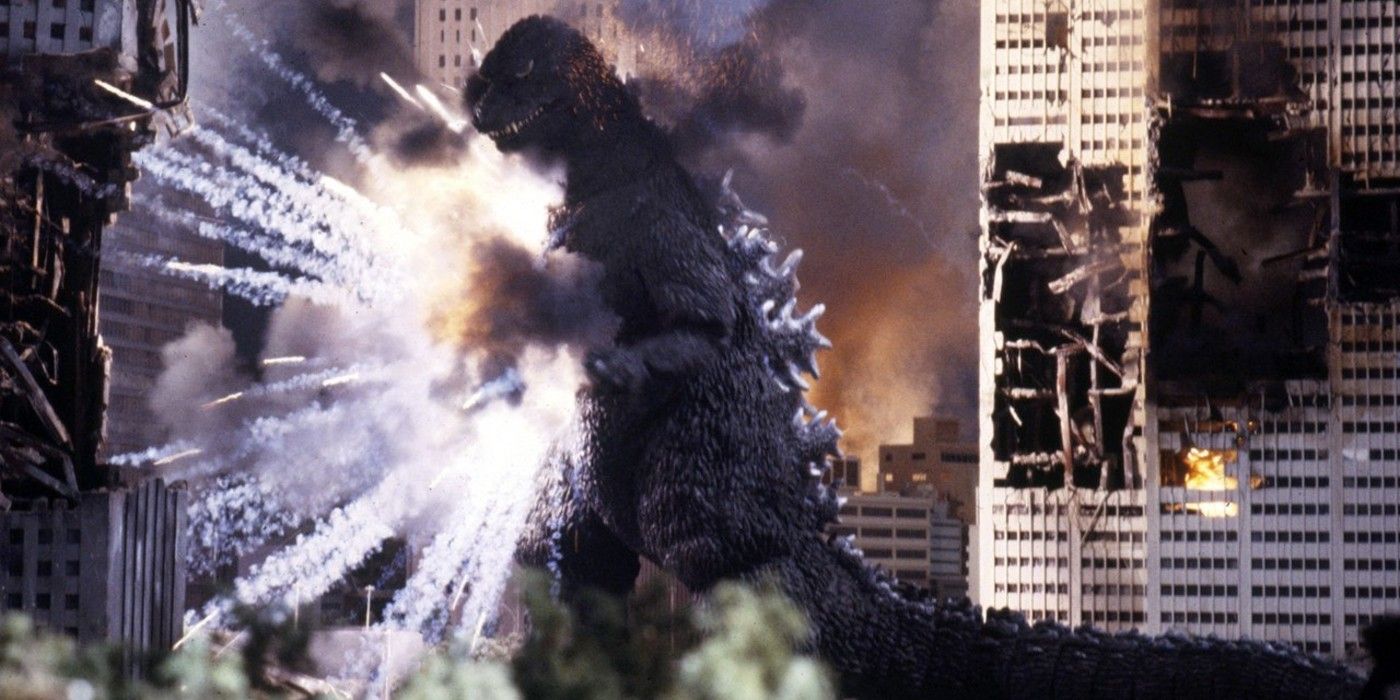
Heisei era
The Heisei era is much darker than the Shōwa era, an attempt to return Godzilla to his roots as an antagonist and as a grim allegory of the nuclear arms race. It also includes the longest stretch of continuity of any period of the franchise, with each film directly carrying events and characters over into the next.
The Return of Godzilla (1984)
The Return of Godzilla is a direct sequel to the 1954 original that also serves as a reboot, resetting the franchise and ignoring the events of every other film from the Shōwa era. (Poor Minilla.) Consequently, the Godzilla of this film is once again a terrifying engine of destruction meant as an allegory for the world's rapidly expanding nuclear arsenal. The political commentary of the first film is updated for the 1980s - at one point, the U.S. destroys a Soviet missile using what is clearly meant to be its much-ridiculed SDI system, derisively nicknamed the "Star Wars program."
Godzilla vs. Biollante (1989)
Godzilla vs. Biollante continues the storyline of the Heisei era, with Godzilla trapped inside a volcano after the events of the previous movie. A scientist experimenting with Godzilla's DNA accidentally creates a monstrous plant-like creature called Biollante, which also contains the DNA of the scientist's dead daughter. Biollante is one of Godzilla's most memorable opponents; the creature design is fascinatingly grotesque, and the concept of the monster's creation is effectively unsettling. This installment is also notable for featuring a shift in the franchise's anti-nuclear messaging to focus on the emerging field of biotechnology and genetic engineering, with Godzilla again serving as less of an antagonist and more of a cautionary tale about the dangers of unchecked scientific discovery. This movie also features the first appearance of the psychic Miki Saegusa (Megumi Odaka), whose telepathic link to Godzilla will play a part in the rest of the films of the Heisei era.
Godzilla vs. King Ghidorah (1991)
It wouldn't be a Godzilla era without King Ghidorah rearing its many heads. The evil space dragon returns with a new backstory in Godzilla vs. King Ghidorah , this time as the creation of a group of time travelers who journey to modern-day Japan claiming to be from a future in which Godzilla has destroyed the world. They trick their contemporary counterparts into allowing them to destroy Godzilla before he is mutated by the hydrogen bomb tests in 1954, leaving an infant Ghidorah in the past to take his place. The villainous time lords then return to the present day and use the now fully-grown Ghidorah to try and conquer the planet, and only Godzilla can stop them. It technically follows the events of the previous two films, but the movie's time-hopping premise primarily references the 1954 original.
Godzilla vs. Mothra (1992)
Godzilla vs. Mothra takes place immediately after the events of Godzilla vs. King Ghidorah, but really the only plot point that you need to know is that Godzilla ended the previous film at the bottom of the ocean once again after defeating Mecha-King Ghidorah. However, Godzilla sheds the semi-heroic role he played in the past two movies and reclaims the mantle of "grumpy shithead" that made him famous. In this film, Godzilla does battle with Mothra and its bat-like twin kaiju Battra for no apparent reason (see "grumpy shithead," above), ultimately killing the latter and getting trapped beneath the Pacific Ocean once more.
Godzilla vs. Mechagodzilla II (1993)
Despite its title, Godzilla vs. Mechagodzilla II is actually a sequel to 1991's Godzilla vs. King Ghidorah rather than the 1974 film Godzilla vs. Mechagodzilla. Directly after the defeat of Mecha-King Ghidorah at the end of Godzilla vs. King Ghidorah, the United Nations uses the remains of the cyborg to build Mechagodzilla and a flying tank called Garuda. (Keen-eyed viewers will notice that Garuda kind of looks like a jetpack cannon designed to be worn by Mechagodzilla, which is exactly what happens in the film's epic finale.) Godzilla vs. Mechagodzilla II also features the first Heisei era appearances of Rodan and Baby Godzilla.
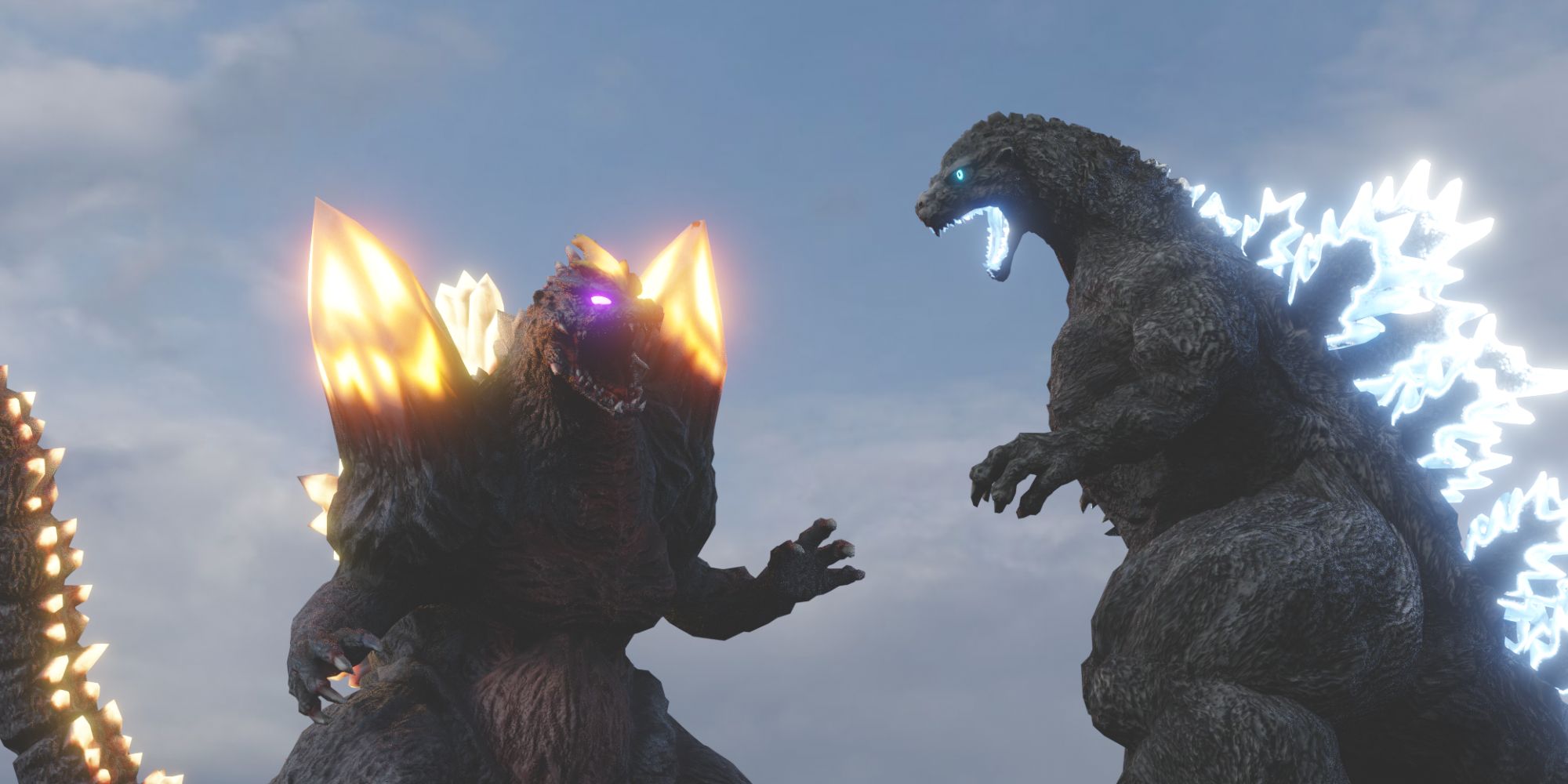
Godzilla vs. SpaceGodzilla (1994)
The tremendously-named SpaceGodzilla is arguably one of the most bodacious characters in the Godzilla franchise next to Godzilla himself, and he makes his first appearance in this movie. Sometime after the events of Godzilla vs. Biollante and Godzilla vs. Mothra, SpaceGodzilla crashes down to Earth as a result of spores jettisoned into the cosmos by Biollante and Mothra. Godzilla and Baby Godzilla join forces with M.O.G.U.E.R.A., a mecha character from an earlier Toho production titled The Mysterians reimagined in this movie as the U.N.'s follow-up to the destroyed Mechagodzilla, to fight the interstellar bad guy. SpaceGodzilla sports an extremely fun character design and a dynamic power set, making it one of the more memorable additions of the Heisei era.
Godzilla vs. Destoroyah (1995)
The final film of the Heisei era pits a dying Godzilla against a swarm of mutant crabs called Destoroyah. Godzilla vs. Destoroyah introduces an interesting element to the franchise, revealing that Godzilla's heart operates like a nuclear reactor and that, as such, it will eventually melt down. The planet is saved from the cataclysmic blast when Baby Godzilla, now called Godzilla Junior, absorbs all of the energy from his father's exploding corpse to become the new Godzilla. Sunrise, sunset.
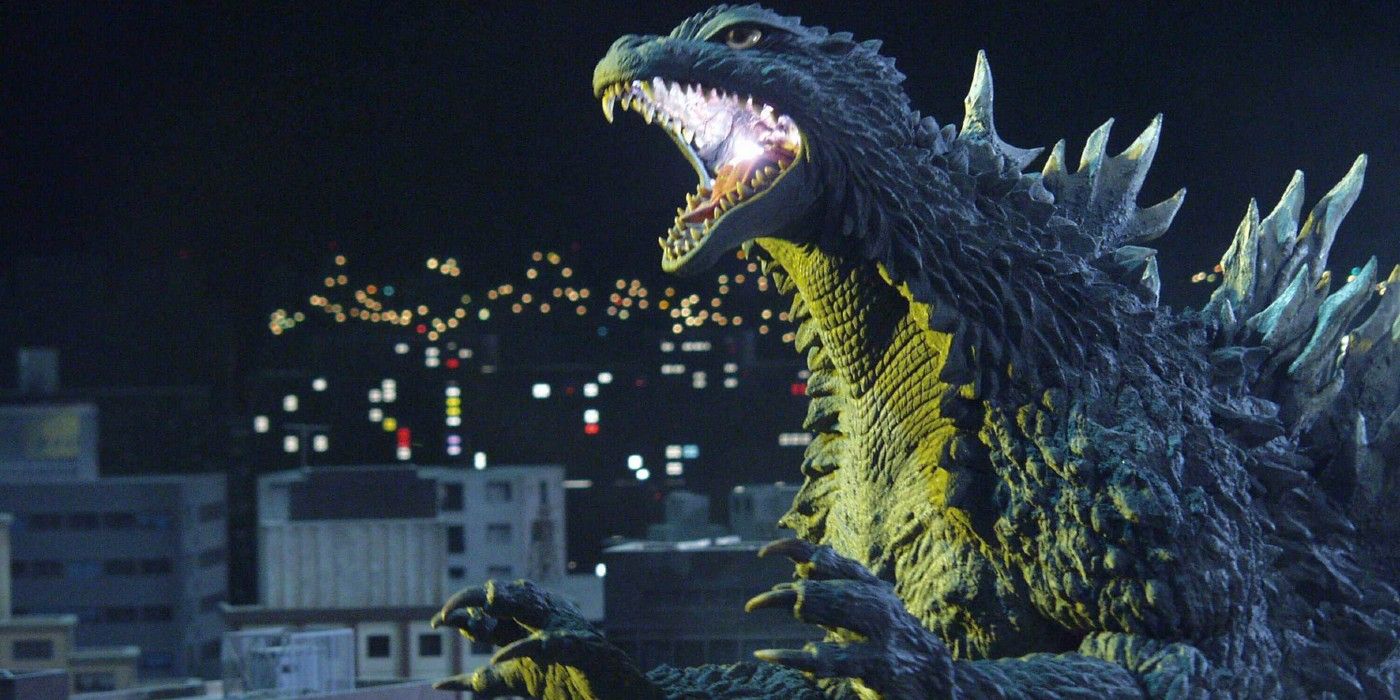
Millennium era
The Millennium era of Godzilla movies goes in the opposite direction of the Heisei era, with virtually no film in this period sharing any continuity with each other (Godzilla Against Mechagodzilla and Godzilla: Tokyo S.O.S. being the only exceptions). Its tone is a mix of the previous two eras, but the primarily villainous characterization of Godzilla is closer to the Heisei period.
Godzilla 2000: Millennium (1999)
Godzilla 2000: Millennium smashes the reset button again, retconning the events of every film from the Heisei and Shōwa eras except for the 1954 original. Godzilla returns to his roots as an oblivious chaos machine, a nuclear hulk who occasionally emerges from the depths to demolish coastal cities, the kaiju equivalent of hurricane season. However, this time aliens have arrived to try and steal Godzilla's regenerative DNA to achieve eternal life and rule the Earth. The aliens eventually use the DNA to clone their own superbeing called Orga, a deformed monstrosity bearing a not-accidental resemblance to the Godzilla from the 1998 American film directed by Roland Emmerich, that does battle with Godzilla in the finale.
Godzilla vs. Megaguirus (2000)
Megaguirus, A.K.A. Yoked Mothra, makes its debut in this film, the gigantic queen of a race of interdimensional insectoid creatures that wind up on Earth thanks to an experimental anti-Godzilla weapon that creates miniature black holes. Despite being the second film in the Millennium era, Godzilla vs. Megaguirus disregards the events of Godzilla 2000, once again wiping the slate of films totally clean save for the 1954 original.
Godzilla, Mothra and King Ghidorah: Giant Monsters All-Out Attack (2001)
The extensively-titled Godzilla, Mothra and King Ghidorah: Giant Monsters All-Out Attack features my favorite dopey-looking horned bat rhinoceros Baragon. Interestingly, it also recasts King Ghidorah as a benevolent protector of the Earth, who must join forces with Baragon and Mothra to thwart a rampaging Godzilla. Just like the previous film, this movie serves as a direct sequel to the 1954 original and ignores every other installment in the franchise. This entry also has the distinction of offering an even more baffling wrinkle to Godzilla's origin story, positing that the creature is imbued with the souls of everyone killed in the Pacific theater of World War II.
Godzilla Against Mechagodzilla (2002)
Godzilla Against Mechagodzilla reimagines Mechagodzilla as a Voltron-style giant robot controlled by a team of human pilots, rebooting the franchise once again to wipe the slate clean of everything except for the 1954 original. Godzilla retains the antagonist status he's enjoyed for the entire Millennium era, fighting Mechagodzilla to a standstill in the film's finale that leads directly into the next installment.
Godzilla: Tokyo S.O.S. (2003)
Picking up one year after the events of Godzilla Against Mechagodzilla, the Japan Self Defense Force (JSDF) hatches a plan to bring Mothra into the fight against Godzilla as they repair the damage Mechagodzilla sustained during the previous film's climactic battle.
Godzilla: Final Wars (2004)
Embracing the impressive chaos of its title, Godzilla: Final Wars doesn't even seem to share a continuity with the original 1954 film, much less any other movie in the Godzilla franchise. It plays out like an all-star game featuring the biggest performers of the previous several decades of films, including Godzilla, Minilla, King Ghidorah (here called Monster X), Anguirus, Rodan, Mothra, King Caesar, and Hedorah, among many others. This movie could essentially be called "Godzilla Beats the Shit Out of Everything," because that is exactly what happens before the iconic kaiju peacefully returns to the sea with his goofy child in tow.
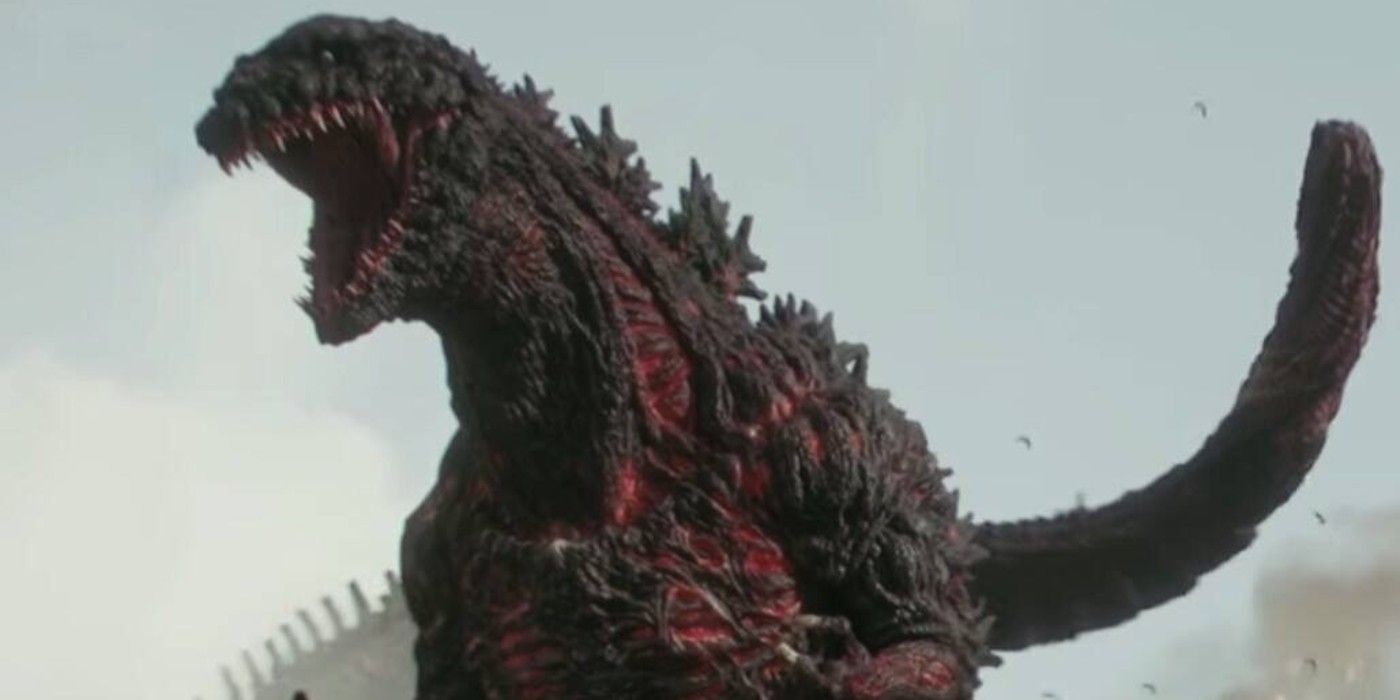
Reiwa era
The Reiwa era began with the 2016 live-action reboot Shin Godzilla and continued with a self-contained trilogy of animated features. This period contains the biggest narrative changes in the Godzilla franchise; in particular, the animated trilogy takes place in a distant future, long after the entire planet has fallen to Godzilla.
Shin Godzilla (2016)
Shin Godzilla completely reboots the franchise, offering a modern-day origin for Godzilla that was clearly inspired by the Fukushima disaster in 2011, a massive nuclear accident involving multiple meltdowns and hydrogen explosions following the Tōhoku earthquake and tsunami. Godzilla is still a neutral engine of destruction in this film, but here he serves as an indictment of government inaction and inefficient bureaucracy as Japanese officials continuously scramble to provide belated and ineffective responses to each Godzilla attack. Godzilla also gains the Hulk's ability to absorb incoming attacks and gain their strength, which is undoubtedly a reference to the strained sense of security provided by the concept of mutually-assured destruction – you can bomb Godzilla all you want, but in the end it's just creating a bigger problem for the rest of the planet that will eventually become untenable.
Godzilla: Planet of the Monsters (2017)
The first animated film in the franchise, Godzilla: Planet of the Monsters also updates the setting to a future in which humans abandoned Earth to Godzilla centuries earlier. The film follows a ship full of colonists that attempts to return to Earth to destroy Godzilla and reclaim the planet. It's one of the more narratively dense films of the franchise, thanks in part to its anime bones, but it's largely self-contained in that it does not seem to share any continuity with any previous Godzilla movie. However, it does end in a cliffhanger that leads almost directly into the next movie.
Godzilla: City on the Edge of Battle (2018)
The colonists regroup after their disastrous attack on Godzilla at the end of the first movie and learn of a mysterious facility containing nanometal that was used to create Mechagodzilla. The nanometal can apparently be revived and used against Godzilla - the only catch is, the nanometal needs to assimilate living hosts (willing or otherwise) in order to work. The nanometal predictably turns out to be a bigger treat to the planet than even Godzilla, resulting in a real Empire Strikes Back downer of a climax that teases the next film.
Godzilla: The Planet Eater (2018)
The final installment of the Planet of the Monsters trilogy sees the resurrection of King Ghidorah as the primary antagonist of the franchise. It is a direct sequel to City on the Edge of Battle and wraps up the continuity established by the previous two animated films with a satisfyingly hokey rumination on why we can't all just share the planet and live together in peace.
American Movies
There's been a handful of attempts over the years to build a franchise of American Godzilla movies that hasn't experienced much success until Legendary's MonsterVerse.
Godzilla, King of the Monsters! (1956)
A localized version of the original Japanese release with Raymond Burr sweatily added in and approximately 30 minutes of footage removed, including the majority of the political references and the direct connections to the atomic bomb. This version of the 1954 classic is interesting as a pop culture artifact, but I literally can't think of any other reason to watch it.
King Kong vs. Godzilla (1963)
A heavily re-edited version of the Japanese film designed to localize the movie for American audiences. This version isn't that much different, but again, if you have access to the original Japanese version, there is no reason to give this one a second thought.
Godzilla 1985 (1985)
A localized version of The Return of Godzilla, featuring Raymond Burr once again sweatily inserted into the preexisting footage like the high school scenes from an episode of Mighty Morphin' Power Rangers.
Godzilla (1998)
Roland Emmerich's infamously disastrous 1998 follow-up to the record-breaking hit Independence Day reimagined Godzilla for a modern American audience, and while it's undeniably a bad movie, I don't actually consider it to be as terrible as its reputation suggests. For instance, there are plenty of worse movies on this list. That said, 1998's Godzilla is entirely self-contained and shares no continuity with any of the Japanese films or any of the subsequent American films.
Godzilla (2014)
2014's Godzilla is another standalone reboot, recasting Godzilla in an Earth protector role similar to Mothra or that blessedly ridiculous tortoise Gamera. It's the first film in Legendary's MonsterVerse, which also contains the prequel Kong: Skull Island and the direct sequel Godzilla: King of the Monsters .
Godzilla: King of the Monsters (2019)
Taking place five years after the events of 2014's Godzilla, Godzilla: King of the Monsters is essentially a reboot of Ghidorah, the Three-Headed Monster, pitting Godzilla and Mothra against Rodan and perpetual shitheel King Ghidorah. It's a direct sequel to Godzilla and contains references to the prequel film Kong: Skull Island.
Godzilla vs. Kong (2021)
Our gorgeous bois fight for the second time since 1962's King Kong vs. Godzilla. Two years after Godzilla: King of the Monsters, the titularly regal lizard begins attacking humans for no apparent reason. Kong is brought in as a ringer to try and thwart the angry kaiju, who may or may not be under the control of shadowy forces.
Godzilla Movies in Order of Release
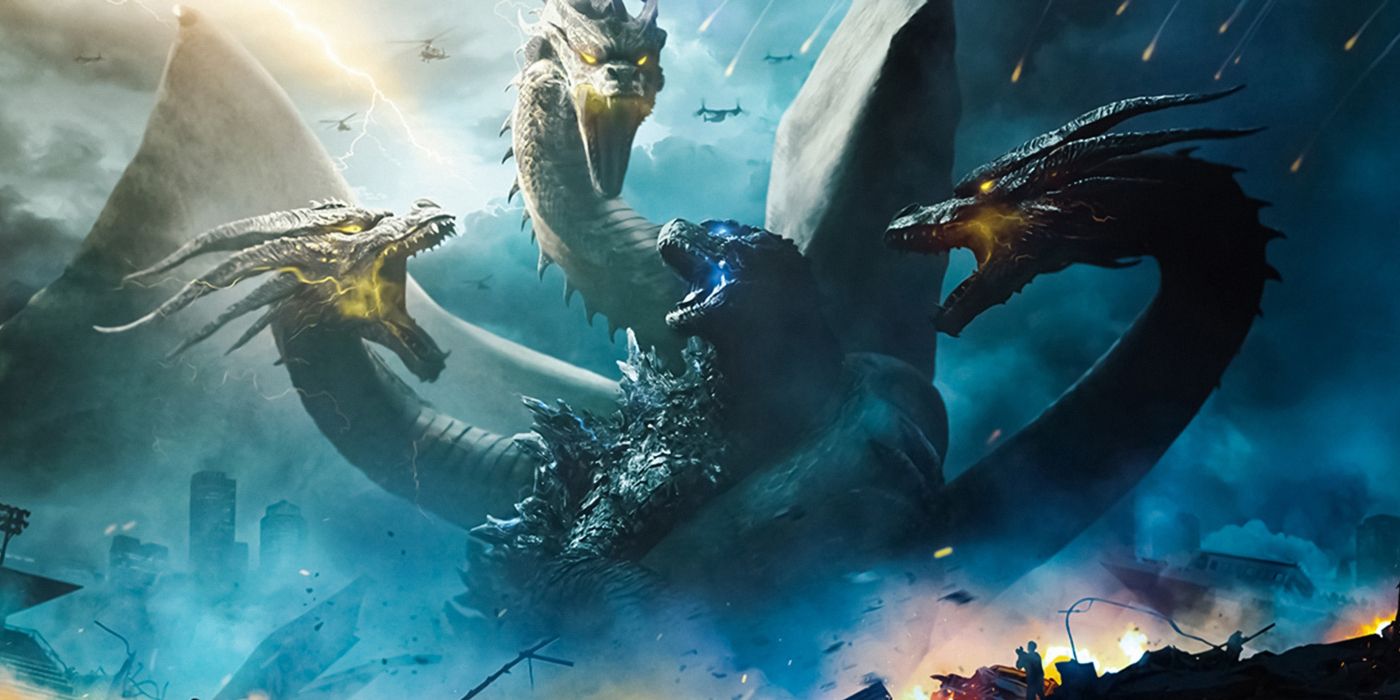
Luckily, if you want to watch every Godzilla movie in the order in which they were released, it's pretty much exactly the same as the chronological order with a few notable differences. We've listed each movie below, with the exception of the localized releases. Just… don't watch those, man.
Godzilla – 1954
Godzilla Raids Again – 1955
King Kong vs. Godzilla – 1962
Mothra vs. Godzilla – 1964
Ghidorah, the Three-Headed Monster – 1964
Invasion of Astro-Monster – 1965
Ebirah, Horror of the Deep – 1966
Son of Godzilla – 1967
Destroy All Monsters – 1968
All Monsters Attack – 1969
Godzilla vs. Hedorah – 1971
Godzilla vs. Gigan – 1972
Godzilla vs. Megalon – 1973
Godzilla vs. Mechagodzilla – 1974
Terror of Mechagodzilla – 1975
The Return of Godzilla – 1984
Godzilla vs. Biollante – 1989
Godzilla vs. King Ghidorah – 1991
Godzilla vs. Mothra – 1992
Godzilla vs. Mechagodzilla II – 1993
Godzilla vs. SpaceGodzilla – 1994
Godzilla vs. Destoroyah – 1995
Godzilla - 1998
Godzilla 2000: Millennium – 1999
Godzilla vs. Megaguirus – 2000
Godzilla, Mothra and King Ghidorah: Giant Monsters All-Out Attack – 2001
Godzilla Against Mechagodzilla – 2002
Godzilla: Tokyo S.O.S. – 2003
Godzilla: Final Wars – 2004
Godzilla – 2014
Shin Godzilla – 2016
Godzilla: Planet of the Monsters – 2017
Godzilla: City on the Edge of Battle – 2018
Godzilla: The Planet Eater – 2018
Godzilla: King of the Monsters – 2019
Godzilla vs. Kong – 2021
Source: https://collider.com/how-to-watch-godzilla-movies-in-order/
0 Response to "Godzilla and His Son Funny Photos"
Post a Comment